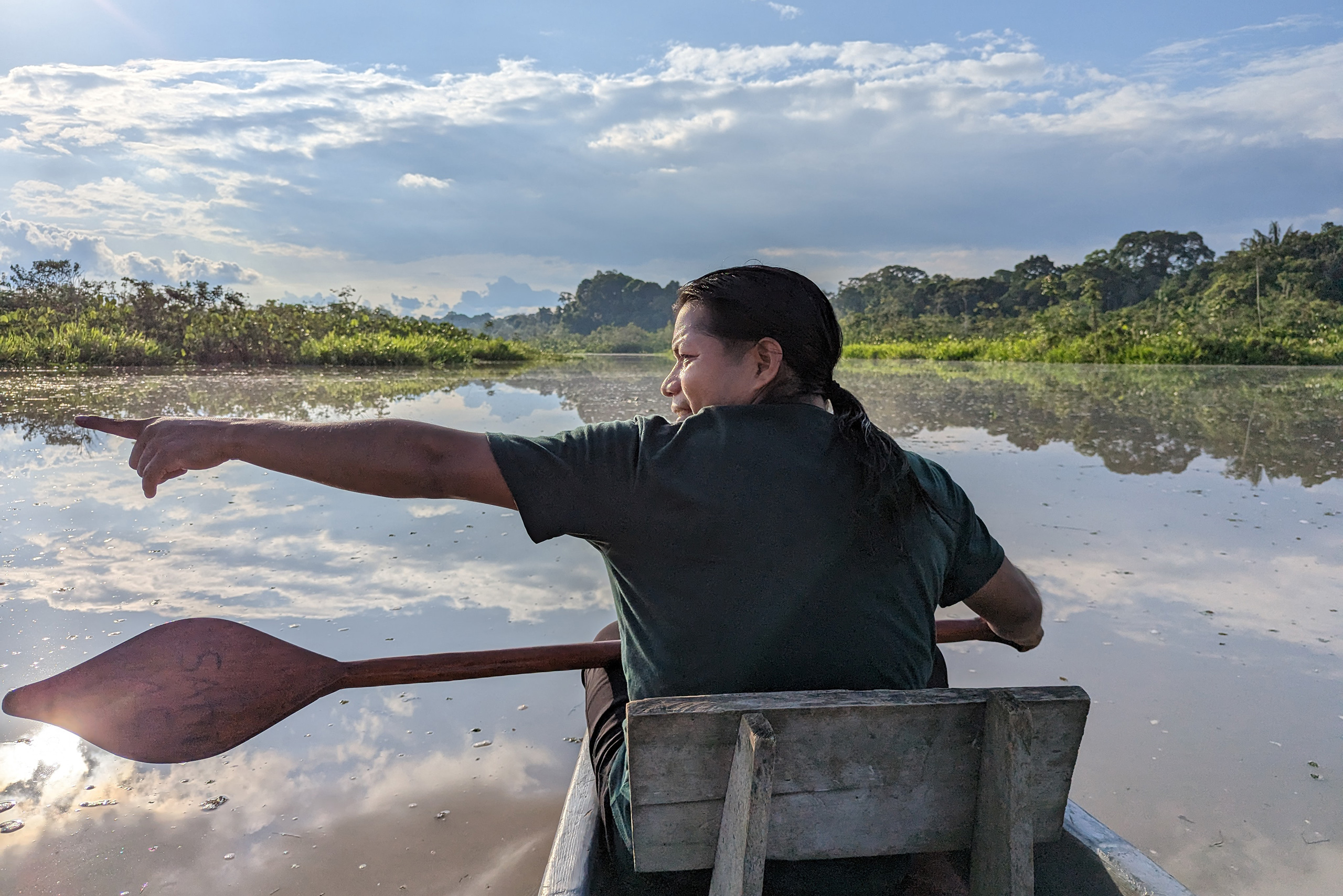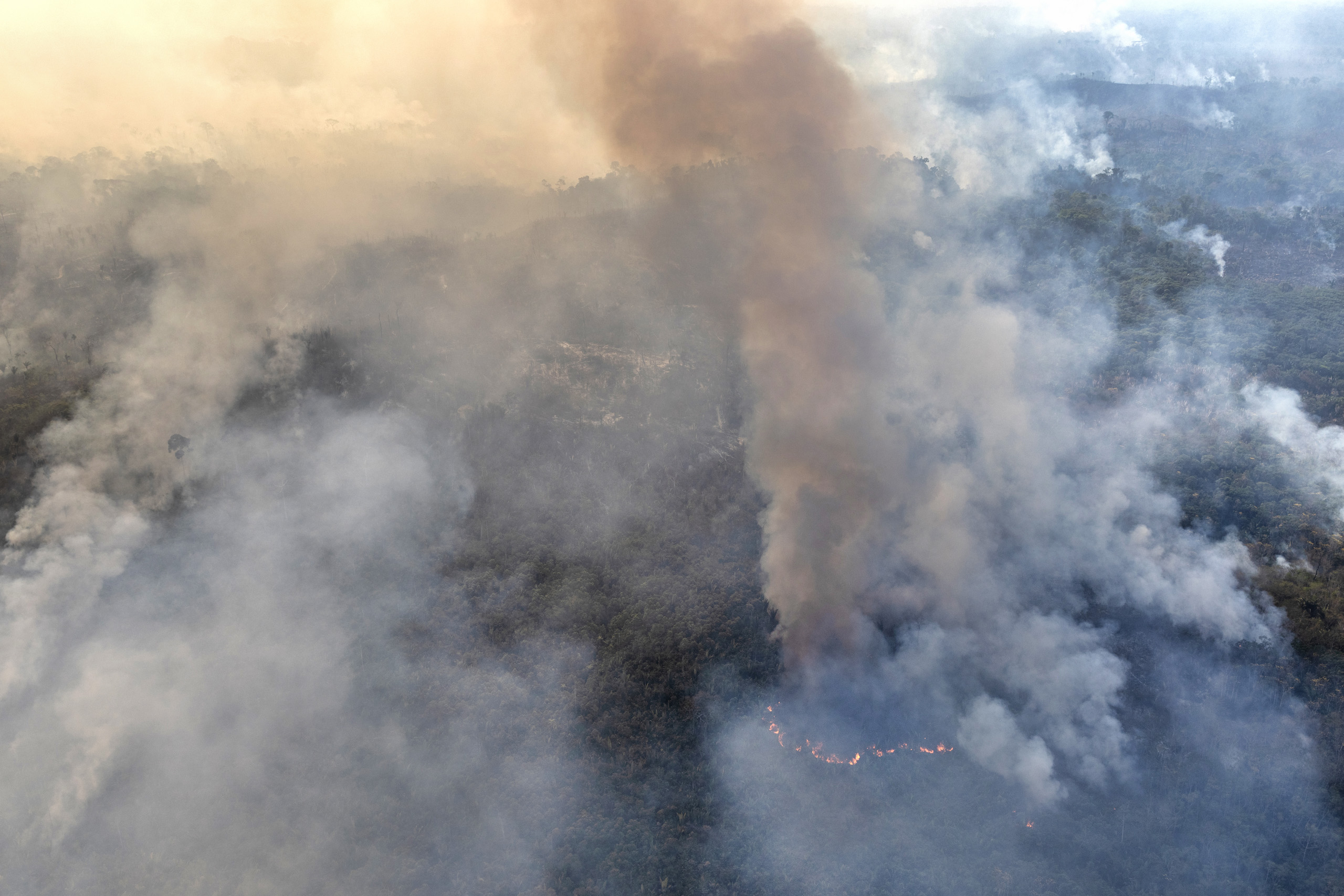Climate change is no longer a distant threat; it’s here, growing more severe with each year. We are witnessing an increase in extreme weather events—more frequent and intense hurricanes, floods, and droughts. Rising sea levels are flooding coastlines, endangering entire island nations as well as major American cities like New York and my hometown of New Orleans. Worsening heatwaves are threatening to make vast regions of the Middle East and Indian subcontinent uninhabitable. Climate refugees and drought can only lead to more human misery and additional conflict.
 Number of fire hotspots detected by the Aqua satellite across Brazilian biomes between Jan 1 and Sep 26, 1998-2024, according to INPE.
Number of fire hotspots detected by the Aqua satellite across Brazilian biomes between Jan 1 and Sep 26, 1998-2024, according to INPE.
 Number of fire hotspots detected by the Aqua satellite across the Brazilian Amazon (Amazonia) between Jan 1 and Sep 26, 1998-2024, according to INPE.
Number of fire hotspots detected by the Aqua satellite across the Brazilian Amazon (Amazonia) between Jan 1 and Sep 26, 1998-2024, according to INPE.
Ironically, some of South America’s most traditional peoples were among the first to raise the alarm about global climate change. In Alan Ereira’s 1990 documentary “From the Heart of the World,” the Kogi people of the Sierra Nevada de Santa Marta in northern Colombia reported that their glaciers were melting, and they correctly blamed the excesses of western civilization for the damage.
We cannot claim we were not warned—and not just by the Kogi.
About 20 years ago, while trekking past an indigenous agricultural garden in one of the most remote parts of the Colombian Amazon, I noticed that the cassava—the community’s staple food—was dying. I asked the chief, my friend and guide, what had caused the crop failure. He shook his head sadly and said, “Cambio de clima”—climate change—the rains never came.
Around the same time, in Suriname, in the northeastern Amazon, where I’ve conducted much of my research, the signs were becoming evident. When I first visited in 1978, the seasons followed a reliable pattern—two distinct wet and two distinct dry seasons, so regular they functioned like a meteorological clock. But by the turn of the century, that started to change. The seasons no longer arrived or ended as expected. The rainy season became even wetter, leading to floods and crop destruction, while the dry season grew harsher, decimating harvests. In a country where much of the population relies on agriculture—whether Indigenous farmers growing subsistence crops in the south or Surinamese industrialists running large-scale rice operations on the coast—these shifts have had devastating impacts.
Once again, it is the people in non-industrialized societies who are bearing the brunt of these changes—changes they did not cause.
 Indigenous Kichwa guide in the Amazon. Photo credit: Rhett A. Butler
Indigenous Kichwa guide in the Amazon. Photo credit: Rhett A. Butler
Amazonia – rivers and rainforest – plays several vital roles in global well-being. Encompassing less than 10% of the Earth’s surface, the Amazon is nonetheless home to a significant portion of the world’s biodiversity, both terrestrial and aquatic. The plants and animals benefit not only the 30 million people who live in the region – including more than 300 Indigenous groups – but also populations around the globe. For many indigenous peoples, the forest and rivers provide food, medicine, shelter, and fuel. Non-Indigenous groups—peasants, mestizos, caboclos, and Afro-descendants—also rely on the wilderness for their survival. A 2014 World Bank study concluded that people living near tropical forests typically derive over 20% of their household income from local ecosystems, including timber, non-timber forest products, and fish.
The medicinal potential of Amazonian species extends far beyond local communities. Plants like coca, curare, jaborandi and quinine were once exported globally, and synthetic ACE inhibitors—derived in part from the venom of a Brazilian viper—now generate billions of dollars annually, even though none of the profits are returned to Amazonia – a unfair situation which is no longer acceptable. Yet much of the medicinal knowledge held by tribal shamans and other herbal healers has barely been explored. Further research could unlock even more of the Amazon’s potential value for humanity.
And finding new and useful medicinal benefits from and applications for biodiversity are not limited to learning from the brilliance of indigenous teachers. For example, fungi – one of the least studied group of organisms in Amazonia – offer extraordinary untapped potential. Field studies in the rainforest by ethnobiologist Glenn Shepard with his Matsigenka teachers demonstrate that indigenous perspicacity of the utility of some fungi exceeds that of western scientists. And mycologist Paul Stamets and his team are experimenting with fungal extracts that show great promise to stave off honeybee colony collapse, attack and destroy insect pests in the home, and even extend the duration and depth of vaccine effectiveness.
 An indigenous man in the Amazon rainforest. Image by Rhett A. Butler/Mongabay.
An indigenous man in the Amazon rainforest. Image by Rhett A. Butler/Mongabay.
The agricultural importance of Amazonian plants is similarly underappreciated. Many globally important crops, including avocados, cacao, chili peppers, manioc, peanuts, and pineapples either originate in Amazonia or have close wild relatives there. These varieties could offer genetic diversity that strengthens cultivated crops, making them more resistant to pests and disease.
Beyond its biodiversity, the Amazon plays a crucial role in regulating the global climate. Researchers at the University of Leeds estimate that the Amazon contains one-fifth of the planet’s terrestrial carbon. When these forests are destroyed, the carbon is released into the atmosphere, exacerbating climate change. Living rainforests absorb and store carbon; deforestation releases it.
The Amazon also regulates water cycles locally, regionally, and globally. It acts as both a sponge and a spout, absorbing rainfall and then releasing moisture into the atmosphere through photosynthesis. Brazilian scientists estimate that up to 80% of Amazonian moisture stays within this closed cycle. Deforestation is disrupting this process, reducing local rainfall and contributing directly to droughts—droughts that are now fueling the fires consuming the Amazon.
 Rainfall over the Amazon river. Photo by Rhett A. Butler
Rainfall over the Amazon river. Photo by Rhett A. Butler
Rainfall from the Amazon is critical to agriculture beyond the region, including Brazil’s soy-producing grasslands, known as the cerrado. Deforestation has been linked to severe droughts in São Paulo, Brazil’s economic heartland, and may even be affecting rainfall patterns as far away as the United States.
With war in both Europe and the Middle East, the Amazon fires have not dominated the headlines as they did in 2019. Nonetheless, the Amazonian inferno may be happening at a larger scale than it did just five years ago. For one thing, the El Nino event – which typically disrupts global weather patterns – has created hotter and drier conditions and reduced rainfall in much of tropical South America. But deforestation itself has also reduced rainfall, further intensifying the drought. Unlike the situation in 2019 when Bolsonaro was in power, President Lula of Brazil and President Petro of Colombia came into office promising better stewardship of their national rainforests though agendas have been slowed down by bureaucratic squabbles and other factors.
To me, the most compelling reason to protect the Amazon is not a utilitarian one, but an ethical one. Do we truly choose to live in a world where we – and our children and our grandchildren – are deprived of the beauty and wonder of Amazonian creatures like the pink dolphin or cobalt blue morpho butterfly – or even whales, elephants and pandas – simply because of human shortsightedness and greed?
In Suriname, there’s a saying: “The Amazon holds answers to questions we have yet to ask!”
At this moment, some of those answers are going up in flames.
 Greenpeace Brazil conducted an aerial survey in southern Amazonas and northern Rondônia to monitor deforestation and fires in July 2024. With over 10,000 hotspots just this month, the country has set a record for fire activity in nearly twenty years in the Amazon. Forest fires and burns were also reported in Conservation Units and properties financed with rural credit.
Greenpeace Brazil conducted an aerial survey in southern Amazonas and northern RondĂ´nia to monitor deforestation and fires in July 2024. With over 10,000 hotspots just this month, the country has set a record for fire activity in nearly twenty years in the Amazon. Forest fires and burns were also reported in Conservation Units and properties financed with rural credit.
Ethnobotanist Mark Plotkin serves as President of the Amazon Conservation Team and host of the popular podcast, “Plants of the Gods.” He is currently in the northeast Amazon, helping to inaugurate the new Center for the Guardians of Ancestral Knowledge.
A Amazônia está em chamas novamente. O que isso significa para nós (comentário)
Source link : http://www.bing.com/news/apiclick.aspx?ref=FexRss&aid=&tid=66fa15e61f624beeb910d3e13f45f6a9&url=https%3A%2F%2Fnews.mongabay.com%2F2024%2F09%2Fthe-amazon-is-ablaze-again-what-it-means-for-us-commentary%2F&c=13146579942306568643&mkt=en-us
Author :
Publish date : 2024-09-29 15:59:00
Copyright for syndicated content belongs to the linked Source.












